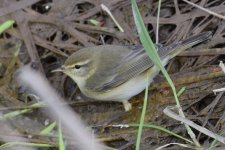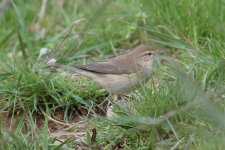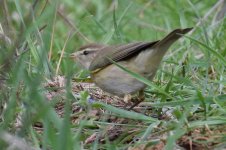Hello everyone. I found these two birds in Henares river (Guadalajara) during April 2018.
I am not sure if they are both Phylloscopus collybita, as they somehow look strange to me. The first image belongs to "Bird no. 1", while the other photos belong to the same "Bird no. 2".
I am not sure if they are both Phylloscopus collybita, as they somehow look strange to me. The first image belongs to "Bird no. 1", while the other photos belong to the same "Bird no. 2".









